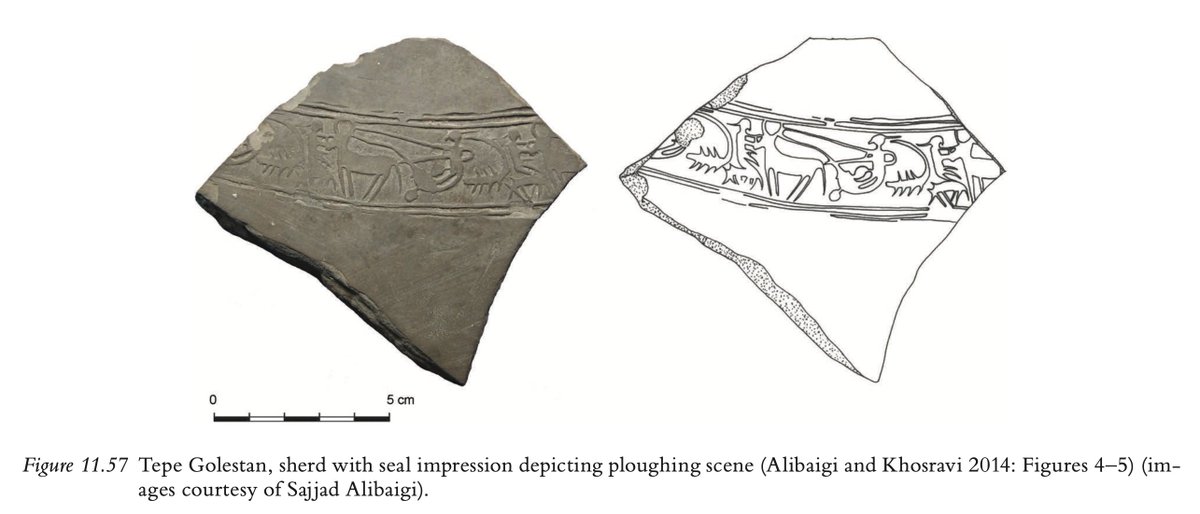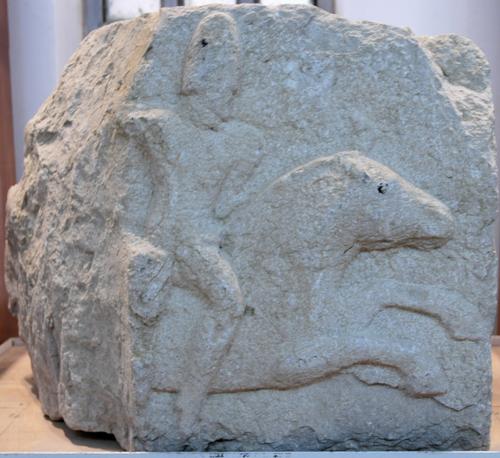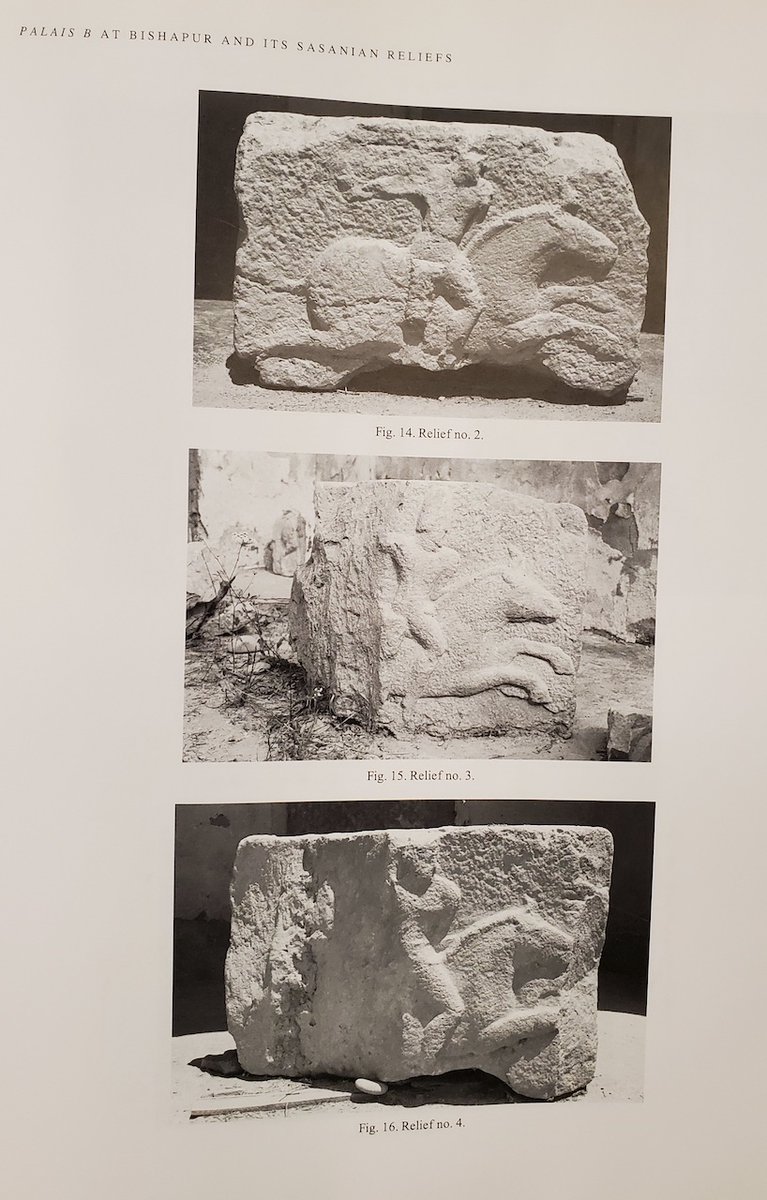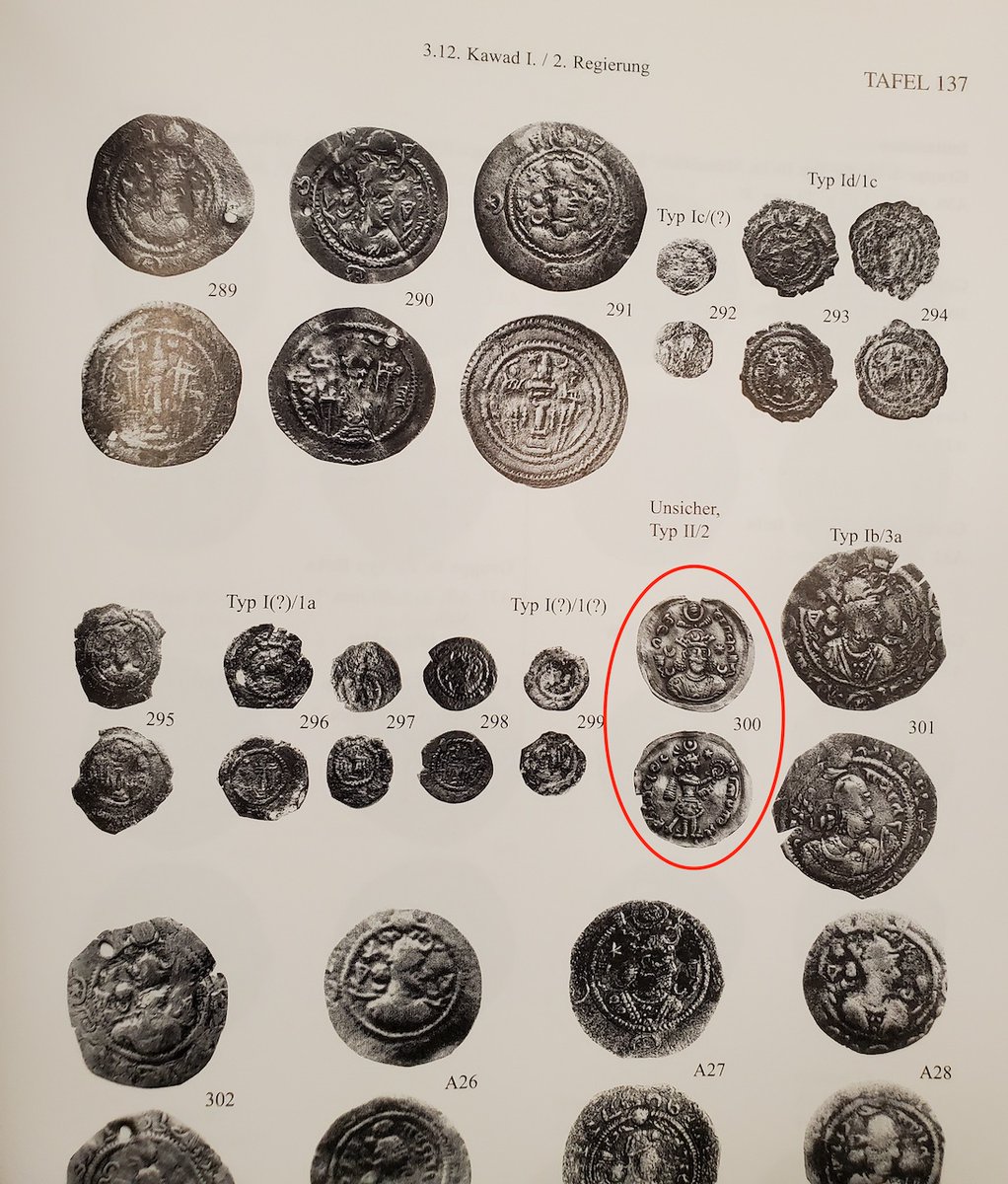
Agriculture in Ancient Iran: Just so not all the news is sad. ❤️🔥
Based on a few years of research to find visual & primary sources. |
اینو مینویسم که یک گوشه دیگه از تاریخمون رو بهتر بشناسیم: کشاورزی در ایران باستان.
⤵️🧵
Based on a few years of research to find visual & primary sources. |
اینو مینویسم که یک گوشه دیگه از تاریخمون رو بهتر بشناسیم: کشاورزی در ایران باستان.
⤵️🧵

Major cereal-related episodes in Iran's history
Also See: The cultivation and domestication of wheat
and barley in Iran, brief review of a long history, 2021
درآمدی بر آبیاری و کشاورزی در پارس باستان.
⤵️
Also See: The cultivation and domestication of wheat
and barley in Iran, brief review of a long history, 2021
درآمدی بر آبیاری و کشاورزی در پارس باستان.
⤵️

My focus here will be on visual and a few primary sources related to agriculture. See Iranica articles on agriculture generally.
Some visual reps I focus on are the plough & the sickle for example. Of course not unique to ancient Iran.
Cart Wheel, Choghazanbil
⤵️
Some visual reps I focus on are the plough & the sickle for example. Of course not unique to ancient Iran.
Cart Wheel, Choghazanbil
⤵️

Though not directly on point, wheels, to state the obvious, also had numerous uses in the ancient world including one can assume in agriculture.
Ploughing Scenes: 1: Tepe Golestan
2: Babylonian Seal impression. 14thC BCE, found in Susa
⤵️

Ploughing Scenes: 1: Tepe Golestan
2: Babylonian Seal impression. 14thC BCE, found in Susa
⤵️


Actual #Achaemenid seal with ploughing /plowing scene
مهر هخامنشی با تصویر کشاورز, گاوهای زراعت (ورزا ) و خیش.
⤵️
مهر هخامنشی با تصویر کشاورز, گاوهای زراعت (ورزا ) و خیش.
⤵️

Seal 1: "a team of humped bulls pulls a plow toward the right; ahead of them a man sows broadcast from an open sack of seed at his waist"
Achaemenid era.
3: Achaemenid satrapy coins
⤵️


Achaemenid era.
3: Achaemenid satrapy coins
⤵️



Possible #Sasanian era seals with ploughing scenes
1: Saeedi Collection
2: private collection
#مهسا_امینی
#Mahsa_Amini
⤵️

1: Saeedi Collection
2: private collection
#مهسا_امینی
#Mahsa_Amini
⤵️


Water management in a place like Iran where large parts of the country are dry and without water is of course essential for farming
For thousands of years, Iranians devised surface-level & underground channels, canals, etc. for water management
Photos: Pasargadae
⤵️



For thousands of years, Iranians devised surface-level & underground channels, canals, etc. for water management
Photos: Pasargadae
⤵️




This is also related to gardens & gardening in ancient Iran which is another big part of Iranian culture.
One big part of water management was the qanat = karez = underground aqueduct system
⤵️



One big part of water management was the qanat = karez = underground aqueduct system
⤵️
https://twitter.com/On_Persia/status/1517972605340430337?s=20&t=8uXhBXPpX7xQ_1I6_1WIaQ



Photos of qanats in Iran. There are thousands of these around Iran. Some are still used to this day.
⤵️



⤵️




Mention of MP word for qanat (kahas) in primary sources. As well as mention of gardens and vineyards
2: Tang-e Khošk
⤵️

2: Tang-e Khošk
⤵️


Old Persian & Elamite primary sources (examples), among many others
1: contract for the delivery of barley, PTS
2: contract for the delivery of dates, PTS
⤵️

1: contract for the delivery of barley, PTS
2: contract for the delivery of dates, PTS
⤵️


1-2: Aramaic record from Bactria, Achaemenid era: ... "Also the corn and the sesame, (for) sowing as seed, which Bagavant is under duty to bring in to the <granary> building of my lord..."
3: Grain-related documents: a) Elamite, commercial contract paid by barley and silver
⤵️


3: Grain-related documents: a) Elamite, commercial contract paid by barley and silver
⤵️



Achaemenid era:
1: A military land grant in Egypt: "... I ploughed the field but did not receive/take from them"
2: Work on canals: Babylonian tablet: "6 spades, 4 sickles were brought ... and 10 sickles to Bel-silim (who are) at the sluice canal of the Cyrus River Canal."
⤵️

1: A military land grant in Egypt: "... I ploughed the field but did not receive/take from them"
2: Work on canals: Babylonian tablet: "6 spades, 4 sickles were brought ... and 10 sickles to Bel-silim (who are) at the sluice canal of the Cyrus River Canal."
⤵️


Parthian era: Avroman Parchment III
"In the year 300 (=53 CE) in the month of Arwatat, Pataspak son of Tirin, who [comes] from Bod, sold half the vineyard of Asmak, which is by the ploughfields..."
⤵️
"In the year 300 (=53 CE) in the month of Arwatat, Pataspak son of Tirin, who [comes] from Bod, sold half the vineyard of Asmak, which is by the ploughfields..."
⤵️

A Collection of #sickles from millennia in ancient Iran
1-2: Susa, @MuseeLouvre , among many other examples at Louvre
#مهسا_امینی
#Mahsa_Amini
⤵️

1-2: Susa, @MuseeLouvre , among many other examples at Louvre
#مهسا_امینی
#Mahsa_Amini
⤵️


Grains harvesting and preparing tools:
a. Stone sickle blades, Tappeh Sang-e Chakhmaq, 6500
5300 BCE
b. Ceramic sickle, Chogha Mish, 3500-3100 BCE
c Stone grinder, Aq Tappeh (Gorgan, North
Alborz, Iran), 5200 4800 BCE
d. Bronze sickle, ancient Lorestan
⤵️
a. Stone sickle blades, Tappeh Sang-e Chakhmaq, 6500
5300 BCE
b. Ceramic sickle, Chogha Mish, 3500-3100 BCE
c Stone grinder, Aq Tappeh (Gorgan, North
Alborz, Iran), 5200 4800 BCE
d. Bronze sickle, ancient Lorestan
⤵️

Sasanian era sickles, plough:
1: @metmuseum
2: Excavated @ Tol-e Qaleh Seyfābād: metal objects including C. Iron #plough
D. Iron axe
E. Iron object resembling #sickle
F. Copper-alloy ladle.
#مهسا_امینی

1: @metmuseum
2: Excavated @ Tol-e Qaleh Seyfābād: metal objects including C. Iron #plough
D. Iron axe
E. Iron object resembling #sickle
F. Copper-alloy ladle.
#مهسا_امینی


Sickles do not have a connection with death in Iran as in parts of western world
My own association for the Persian word is from my time in north of Iran, when I heard in a specific dialect of that region they called the new moon - داس مه = moon sickle...
⤵️
My own association for the Persian word is from my time in north of Iran, when I heard in a specific dialect of that region they called the new moon - داس مه = moon sickle...
⤵️
Not sure how right or accurate that is, but Hafez also has a beautiful poem where he uses this image
⤵️
⤵️

مزرع سبز فلک دیدم و داس مه نو
یادم از کشته خویش آمد و هنگام درو
گفتم ای بخت بخفتیدی و خورشید دمید
گفت با این همه از سابقه نومید مشو...
آتش زهد و ریا خرمن دین خواهد سوخت
حافظ این خرقه پشمینه بینداز و برو
In hopes of a brighter tomorrow, of peace, freedom, love ❤️🔥
یادم از کشته خویش آمد و هنگام درو
گفتم ای بخت بخفتیدی و خورشید دمید
گفت با این همه از سابقه نومید مشو...
آتش زهد و ریا خرمن دین خواهد سوخت
حافظ این خرقه پشمینه بینداز و برو
In hopes of a brighter tomorrow, of peace, freedom, love ❤️🔥

• • •
Missing some Tweet in this thread? You can try to
force a refresh









































































